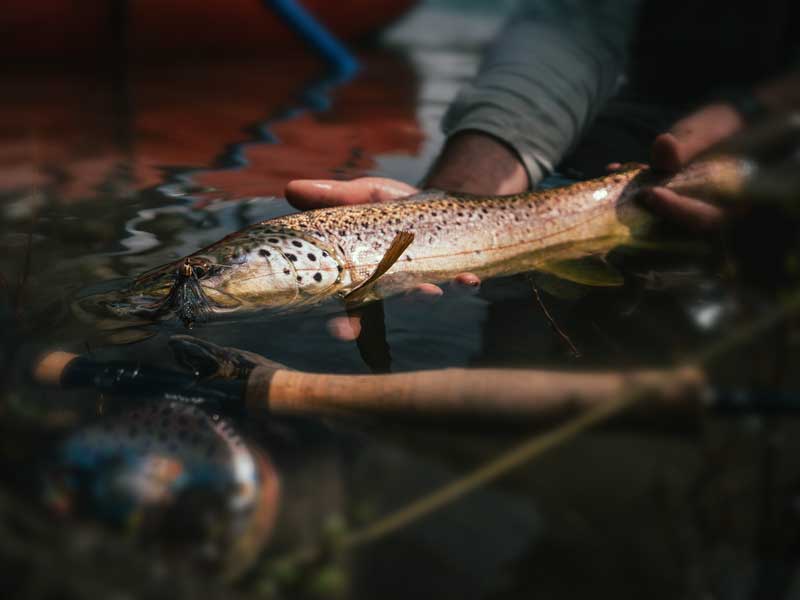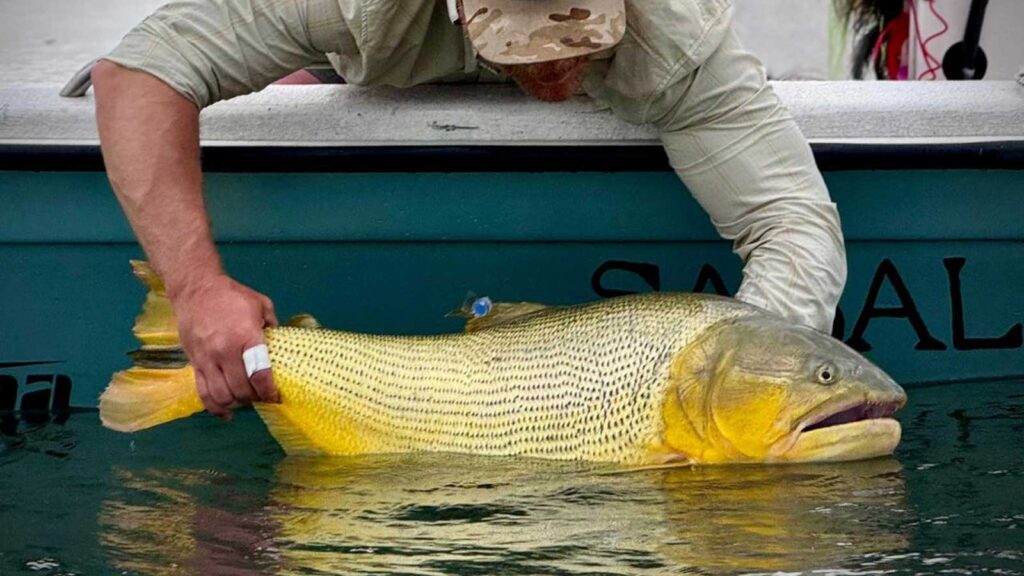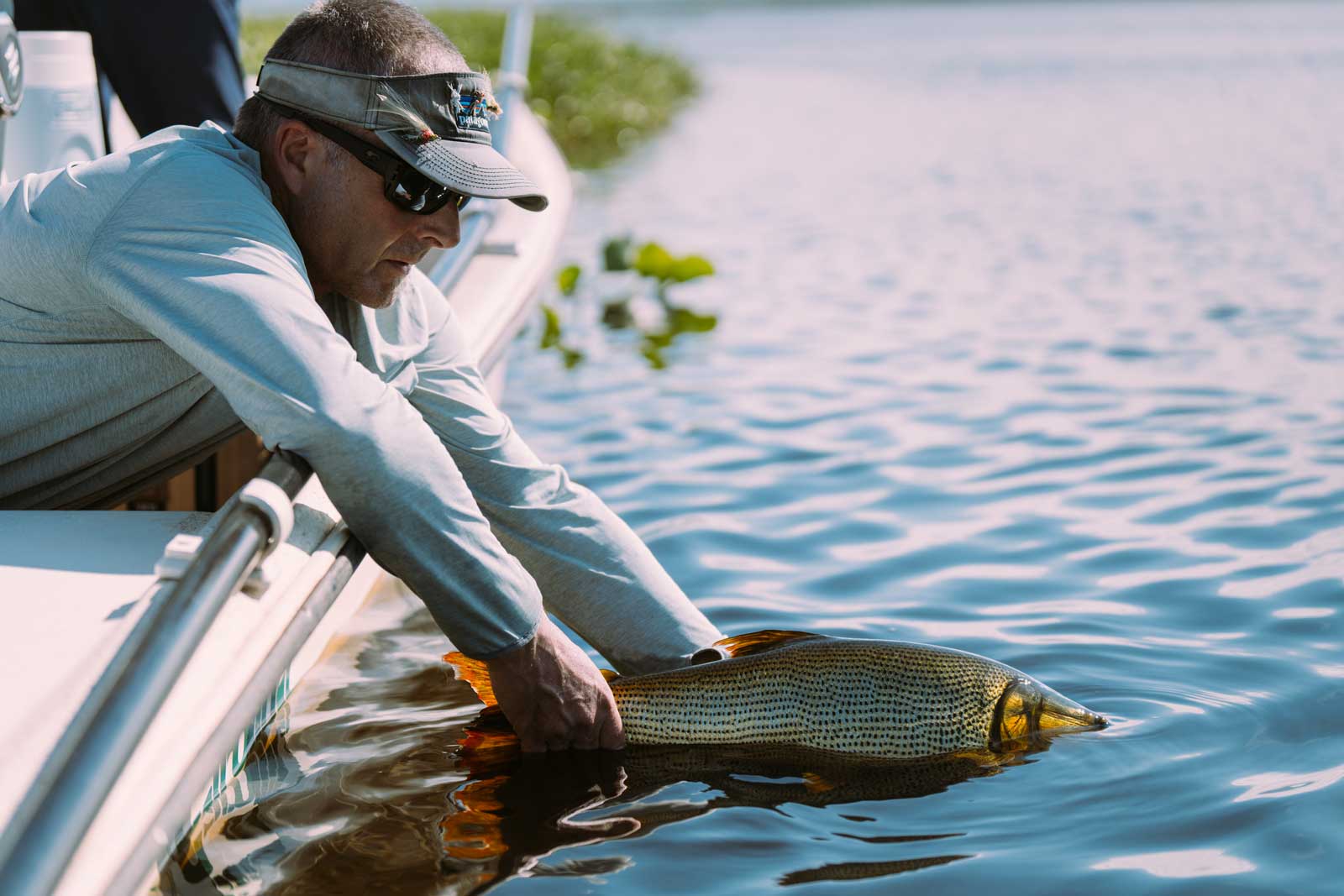Catch-and-release can be an effective way to reduce impacts on recreationally targeted species, however just claiming “I already practice catch-and-release” isn’t good enough. There is a growing body of science that shows that how an angler fights, handles, and releases their fish can greatly impact whether their fish swims away healthy or not. Using science to inform best practices is the perfect way anglers can put conservation into practice with each fish they plan to release.

There are now over 450 scientific studies focused on how fish respond to capture and handling, including their behavior and survival after release. What the science shows is that there are commonalities across different fish species, as well as species-specific differences that anglers and guides should be aware for those fish intended for release rather than shore lunch or the dinner table.
To date, there have only been two studies that have looked at how golden dorado respond to catch-and-release, with only one of these studies being done on wild fish. The study conducted on wild golden dorado near El Tunal, Argentina, used assessments of physical injury, blood physiology, reflex impairment, and movement via radio tracking to collectively evaluate short and long-term responses (up to 8 weeks after release) to capture, handling, and air exposure. No immediate mortality was observed for golden dorado, while longer-term mortality was less than 8%. The results indicated that minimizing air exposure reduces physiological stress and ‘fallback’ downstream from where fish were caught.

Although we have more science on the catch-and-release of trout, the diversity of trout species and wide range of habitats and conditions they live in means that there are still many knowledge gaps left to fill about how they respond to capture and handling. What we do know is that as cold water species, trout as particularly sensitive to being caught when water temperature increase, meaning that anglers and guides need to be extra cautious during certain times of the year.
Overall, each angler and guide should learn and use the following science-based best practices for catch-and-release, whether golden dorado or trout.

Minimize Air Exposure (10 seconds or less)
Do everything possible to minimize the amount of time a fish is out of the water. Fish get their oxygen from the water, not the air (like we do), and after a good fight on the end of your line, fish need that oxygen to start recovering. Even a little bit of air exposure can greatly increase physiological stress and cause a fish residing in a stream or river to ‘fallback’ or be displaced downstream from where they were caught. If you need to take a photo of your fish, let the person with the camera call the shots – 3, 2, 1, lift, click, and back in the water for a quick release. Please also ask yourself if you need a photo of every golden dorado or trout you catch, or whether your memories and stories are enough.

Eliminate Contact with Rough/Dry Surfaces
Fish, including golden dorado and trout, have a slime coating that helps prevent disease and also makes them more hydrodynamic. Putting them in a rough net, on the deck of a boat, on the sand, or even in your dry hands can rub off slime. If you have to touch a fish once landed, wet your hands, and gently hold the fish with one hand under the belly and the other around the base of the tail. Do not squeeze or hug the fish, no matter how much you love them. If you are planning to take a photo of your catch, hold the fish over the water rather than over the boat or the shoreline – dropping a trout or golden dorado on hard surfaces can cause physical injuries, such as scale loss, and increase handling time; both of which a have negative effects on fish welfare.

Reduce Handling Time (from the time landed to released)
Once in hand, a fish is still experiencing stress – it would much rather be back on in the river or wetlandto recover from being caught. An excellent way to reduce handling time, is to first make sure your hooks are barbless – this reduces physical injury to the fish and also makes hook removal easier. Having a pair of pliers, hemostats, or a dehooking tool on hand can certainly help speed this up, especially for a toothy and aggressive fish, like golden dorado. Having a dehooking tool may also mean you may not need to even touch every trout you land – simply run the dehooking tool down the line and pop the fish off (made easier with a barbless hook). If for some reason your trout or golden dorado has swallowed the hook, cutting the line is the best strategy since digging the hook out may cause damage to vital organs.
For more information on basic Principles and Tips for science-based catch-and-release, check out Keep Fish Wet (www.keepfishwet.org).
Each fish matters and every drop counts.
Rates
Have questions about our fly fishing programs or need more information? We’re here to help!
Contact us
Have questions about our fly fishing programs or need more information? We’re here to help!

